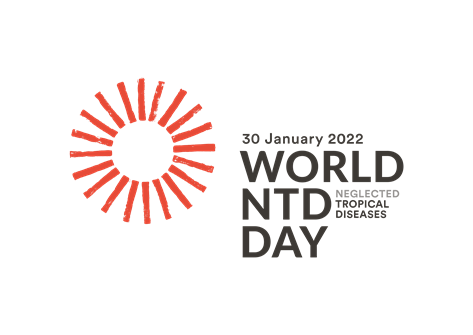
30 January 2022 – 100 landmarks in 34 countries are to be lit up in unity to mark the third annual World NTD Day, including The Bell Tower in Perth, Tokyo Tower, Great Wall of China, Kuala Lumpur Tower, Sheikh Zayed Bridge in Abu Dhabi, Expo 2020 Dubai, The Rome Colosseum, Jet d’ Eau, Niagara Falls, CN Tower, Carter Presidential Library, and Christ the Redeemer.
A special focus was placed on notable landmarks in endemic countries including Bangladesh, Brazil, Burundi, the Democratic Republic of the Congo, Ethiopia, Ghana, India, Kenya, Liberia, Niger, Nigeria, Philippines, Rwanda, South Sudan, Sudan, and Togo. The 100 ‘light ups’ aim to shine a light on neglected tropical diseases (NTDs), as World NTD Day supports the goal of the World Health Organization (WHO) to eliminate at least one NTD from 100 endemic countries by 2030.
NTDs are a group of communicable diseases that are preventable and treatable yet continue to affect more than 1.7 billion people worldwide, including 1 billion children. There are currently 20 diseases and disease groups defined as NTDs and mycetoma, chromoblastomycosis and other deep mycoses are included in the WHO’s list of NTD.
The 2021 Neglected Tropic Disease roadmap highlights that 50% of NTDs relate to the skin. When chromoblastomycosis was accepted as an NTD in 2017, it included ‘other deep mycoses’. Amongst these both mycetoma and sporotrichosis are included. Should African histoplasmosis also be added to this list?
Almost all cases of African histoplasmosis are reported from Africa. This debilitating infection is caused by duboisii, a close relative of capsulatum, the fungus that causes disseminated histoplasmosis in AIDS, and is often fatal. African histoplasmosis differs as it causes chronic skin, lymph and bone infection in people without an immune deficiency and is often seen in older children and younger adults.
There are still many unanswered questions about African histoplasmosis. We do not know enough about the fungus that causes it or the mechanism it uses to enter the human body. It is also unclear as to why it so often travels to the bones and distant parts of skin. Specific treatment options are also currently unavailable. What is undeniable is that this disease is disfiguring and stigmatising for those affected.
To support the campaign LIFE Worldwide, in association with Global Action Fund for Fungal Infections (GAFFI), have produced a free-to-access educational video on African histoplasmosis. It has been recorded by GAFFI’s Ambassador for Ghana, Bright Ocansey and can be viewed here. Bright declared: “African histoplasmosis looks like many skin infections including some NTDs common in Africa such as leishmaniasis, Buruli ulcer and mycetoma. Cases that are diagnosed in the laboratory usually come as a surprise to the clinician. Sending pus or skin biopsy for direct microscopy and histopathologic analysis is very helpful in the hands of a laboratorian/pathologist who ‘thinks fungi’, but care must be taken to avoid confusion with other endemic mycoses.”
#WorldNTDDay2022
#BeatNTDs
Learn more about the global campaign by visiting: https://worldntdday.org/.
